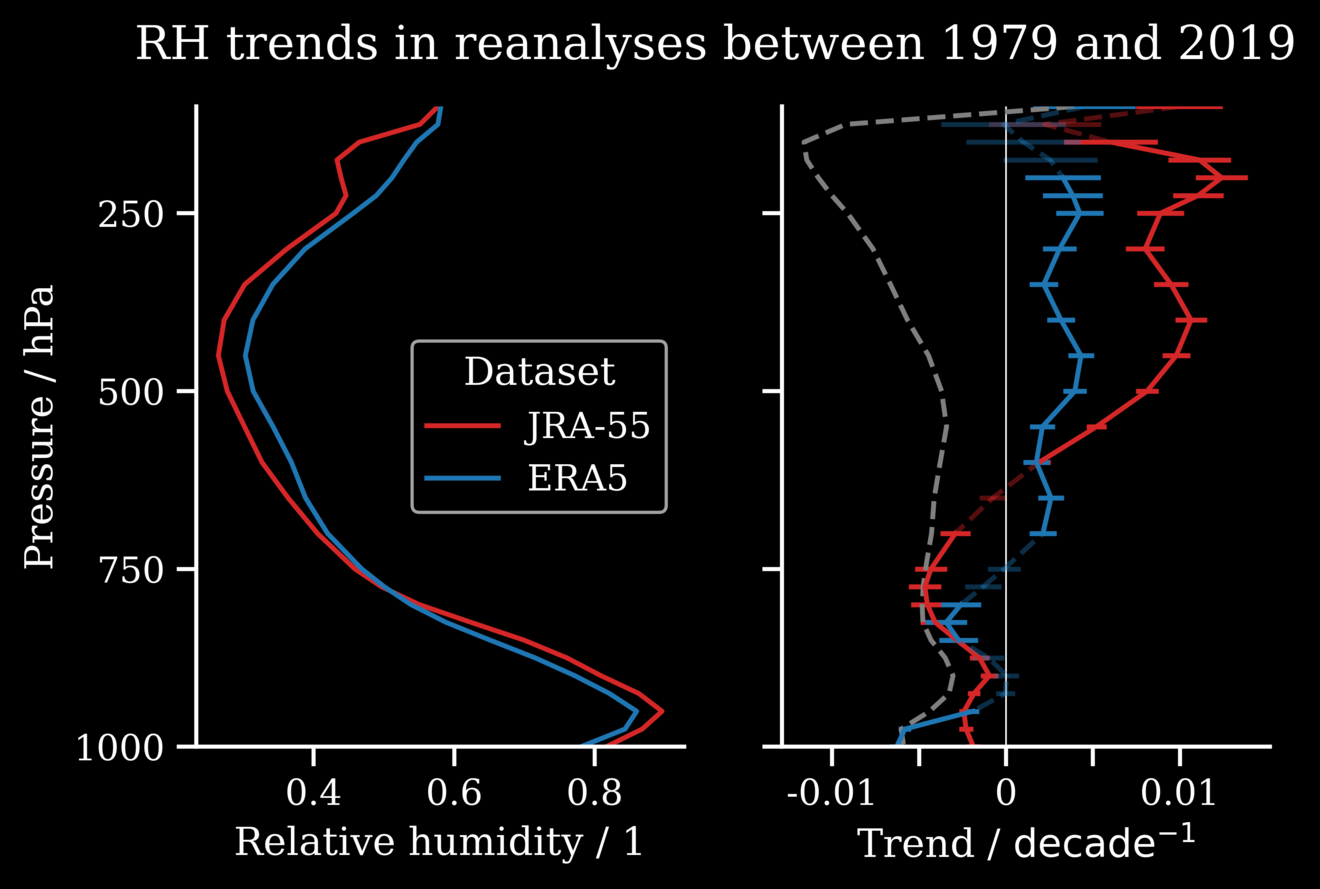Relative humidity is key in quantifying Earth’s changing climate sensitivity
Equilibrium Climate Sensitivity (ECS) is the change in surface temperature in response to a doubling of atmospheric CO2. It is an indicator of the intensity of global warming. However, its value is uncertain and factors influencing it are unclear. This is because behind an apparently simple indicator lies complex physics fundamental to the understanding of the Earth's climate.
Bourdin and her co-authors Lukas Kluft and Bjorn Stevens used “Konrad” to study the humidity dependence of the ECS. It is a single column model of the tropical atmosphere, from the land surface upwards through the atmosphere. The main processes involved are radiative transfer and convection, and it simulates the radiative convective equilibrium of the column. Such a model is attractive for the author´s purposes because it captures (often with surprising fidelity) the behavior of more elaborated descriptions of the climate system in a physically transparent manner.
By simulating the equilibrium of the mean state, and how it changes from a doubling of CO2, the authors computed the ECS for different given profiles of relative humidity. Contrary to expectations, the climate sensitivity varied considerably with the chosen state of relative humidity, highlighting a phenomenon they call “humidity-dependence” of the climate sensitivity.
The authors showed that an overall moister atmosphere is more sensitive. They explained this as resulting from the closing of the atmospheric window in conditions typical for the moist tropics. The atmospheric window is the portion of the electromagnetic spectrum that can be transmitted through the atmosphere and allows Earth’s surface to radiate energy to space. What was more surprising was their finding that increasing humidity only in the lower troposphere slightly decreases the ECS. They further showed that humidity profiles differ considerably in simulations of climate change, especially among idealized simulations of radiative-convective-equilibrium using cloud resolving models, and can account for substantial proportions (10-20%) of the spread in estimates of climate sensitivity.
In addition the authors identified a surprising trend in reanalyses of meteorological observations: The lower troposphere appears to be drying and the upper troposphere is moistening over tropical oceans over the forty year period analyzed. Subject to these reconstructions´ accuracy, both these trends condition the Earth to become more sensitive to forcing over time.
In conclusion, the author’s findings point to the need for improved humidity observations and improved analysis of existing observations to better quantify Earth’s changing climate sensitivity.

Original publication:
Bourdin, S., Kluft, L., & Stevens, B. (2021). Dependence of climate sensitivity on the given distribution of relative humidity. Geophysical Research Letters, https://doi.org/10.1029/2021GL092462
Contact:
Stella Bourdin
Laboratoire des Sciences du Climat et de l'Environnement (LSCE/IPSL)
Email: stella.bourdin@lsce.ipsl.fr
Dr. Lukas Kluft
Max Planck Institute for Meteorology
Email: lukas.kluft@mpimet.mpg.de
Prof. Bjorn Stevens
Max Planck Institute for Meteorology
Email: bjorn.stevens@mpimet.mpg.de
